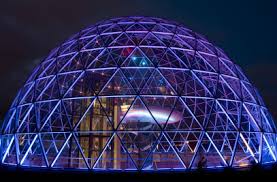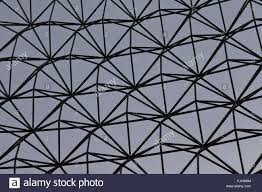Rocketlax44
Walk On
- Joined
- May 17, 2013
- Messages
- 119
- Like
- 110
From Geiger's website

Maybe this has been posted, but after learning Geiger was the structural engineering outfit, I went to their site and found this color pic.
Carrier Dome | Geiger Engineers
Work | Geiger Engineers
Edit: After some further browsing on their site, under the "special" heading there is a picture of a center hung LED scoreboard that Geiger designed the structural aluminum framing and support truss grid at the new (2016) Golden 1 Center in Sacramento. I wonder if the huge scoreboard going in the Dome will be quite similar, possibly larger?
These were cool. Thanks for posting them.
It will be interesting to see how much sun gets into the facility on a sunny afternoon. Will the glare be enough to screw up telecasts?
I don't understand how all the little bubbles are getting formed. I can see wires from the outer truss ring to the inner ring. That makes sense.
Is the plan to run a wire from the truss ring above the roof to the middle of each of the little bubbles in the inner part of the roof? Is that what will give those areas a bubble look?

These were cool. Thanks for posting them.
It will be interesting to see how much sun gets into the facility on a sunny afternoon. Will the glare be enough to screw up telecasts?
I don't understand how all the little bubbles are getting formed. I can see wires from the outer truss ring to the inner ring. That makes sense.
Is the plan to run a wire from the truss ring above the roof to the middle of each of the little bubbles in the inner part of the roof? Is that what will give those areas a bubble look?
Question: why is the outer roof a different material? Why not do the whole thing in PTFE? Cost reduction?Glare: I believe the material chosen is PTFE, not as transparent as the ETFE we all talk about from places like Minnesota.
The little bubbles: The original proposal we saw utilized taller "poles" like masts or stanchions that would wire suspend the PTFE portion of the roof, creating almost a Hershey Kiss look. This updated rendering looks like they have a structural arch within or under the material I have to believe they are all tied together in a self supporting way that ties them to the inner ring, which is suspended (I got in trouble for using the term "hung") from the ring truss. In structural design, depth equals strength. The biggest challenge I heard was concerns over ice damming and freeze/thaw. There is (or was) some concern that there will be a temperature differential at the meeting of the two materials (the outer roof is not PTFE) and that would cause a collection of ice/snow and undue wear on that "seam". I am assuming they have found an acceptable resolution on that.
Cool. If I am counting right, and the drawing reflects the actual plan accurately, then there will be a matrix of 64 mini domes outfitted with structural arches, latticed together in an 8x8 honeycomb to fill in the inner part of the roof.Glare: I believe the material chosen is PTFE, not as transparent as the ETFE we all talk about from places like Minnesota.
The little bubbles: The original proposal we saw utilized taller "poles" like masts or stanchions that would wire suspend the PTFE portion of the roof, creating almost a Hershey Kiss look. This updated rendering looks like they have a structural arch within or under the material I have to believe they are all tied together in a self supporting way that ties them to the inner ring, which is suspended (I got in trouble for using the term "hung") from the ring truss. In structural design, depth equals strength. The biggest challenge I heard was concerns over ice damming and freeze/thaw. There is (or was) some concern that there will be a temperature differential at the meeting of the two materials (the outer roof is not PTFE) and that would cause a collection of ice/snow and undue wear on that "seam". I am assuming they have found an acceptable resolution on that.
I'm sorry but the first thing that popped into my mind looking at these was "cone heads".Perhaps, if they were to do any type of wrapping, possibly some sort of cool/interesting metal/steel lattice type would work. This would allow for light to still come through, as well as the more critical air flow. There's all types of configurations they could do, depending on cost of course. Additionally, depending upon what they chose, they could light it up and reflect the chosen design/art work at night. That could be real cool.


I thought of SNL also. But whatever they remind you of, these cones or cone-clusters better be VERY well made. Exposure will include extreme temperature variations, high winds, UV, snow and wind loads ... the works. I think Tom's math is seems accurate - looks like (if this is the final rendering) a matrix of 64 and then fabric on the perimeter. And putting this up is not going to be a cake-walk either.I'm sorry but the first thing that popped into my mind looking at these was "cone heads".
